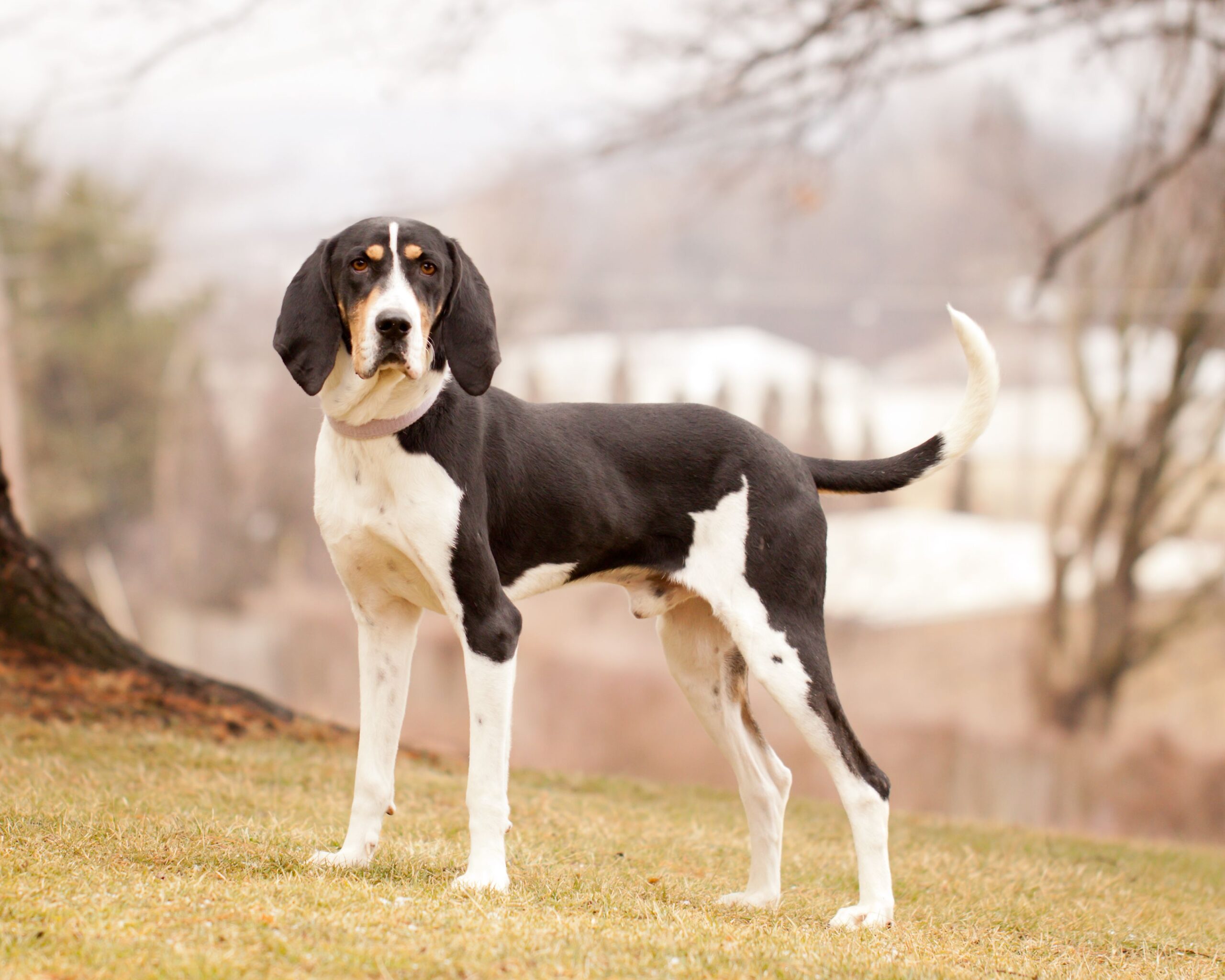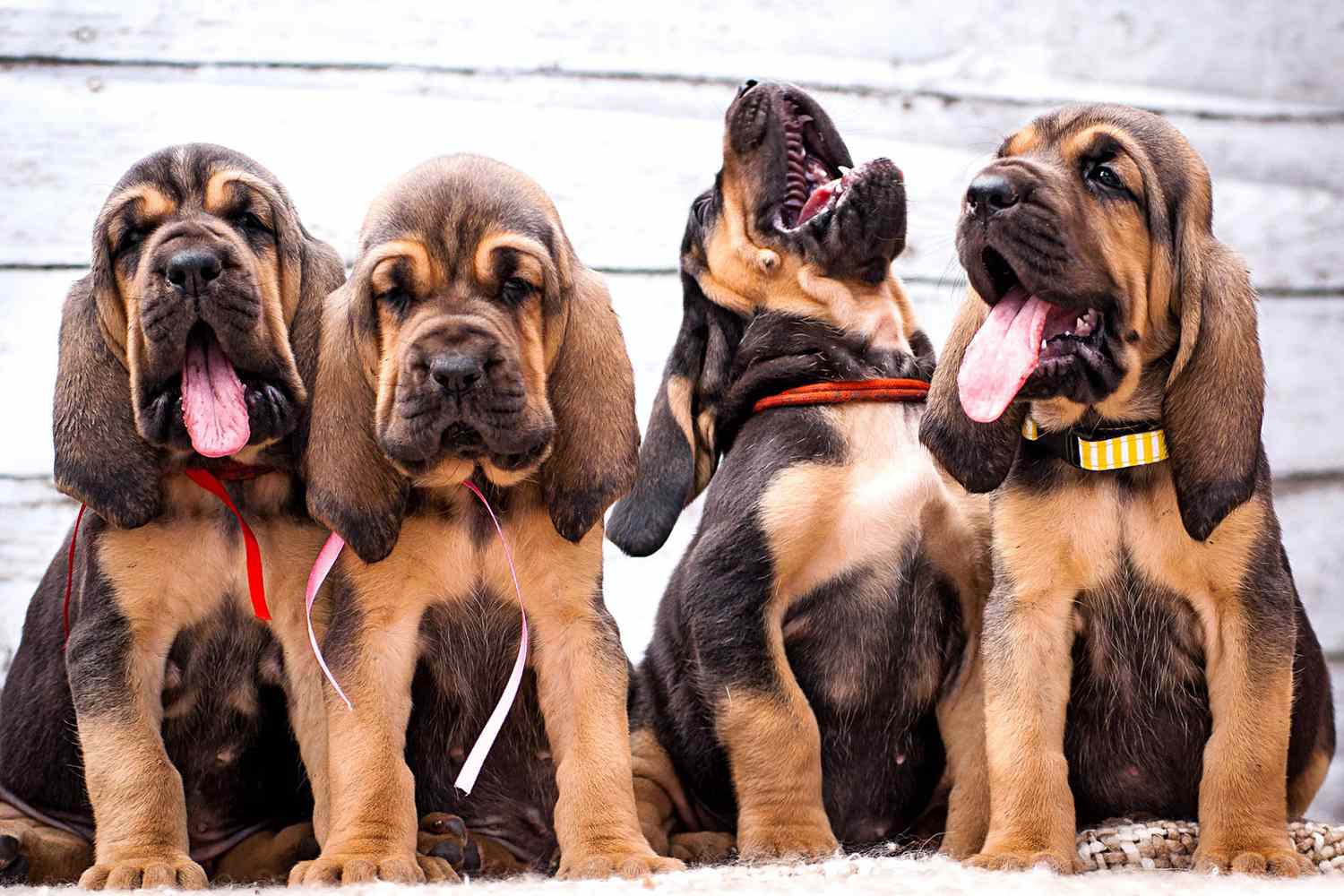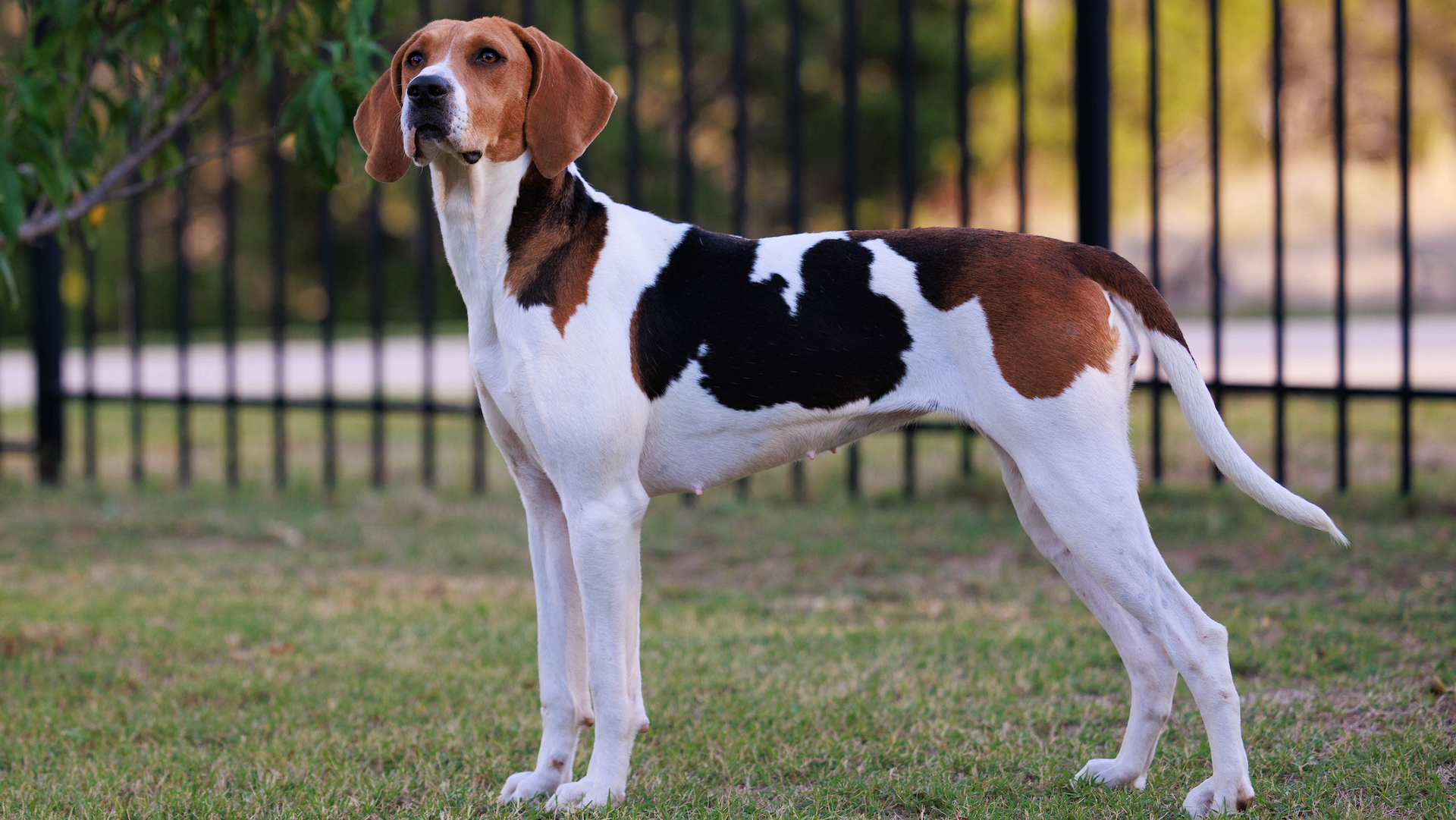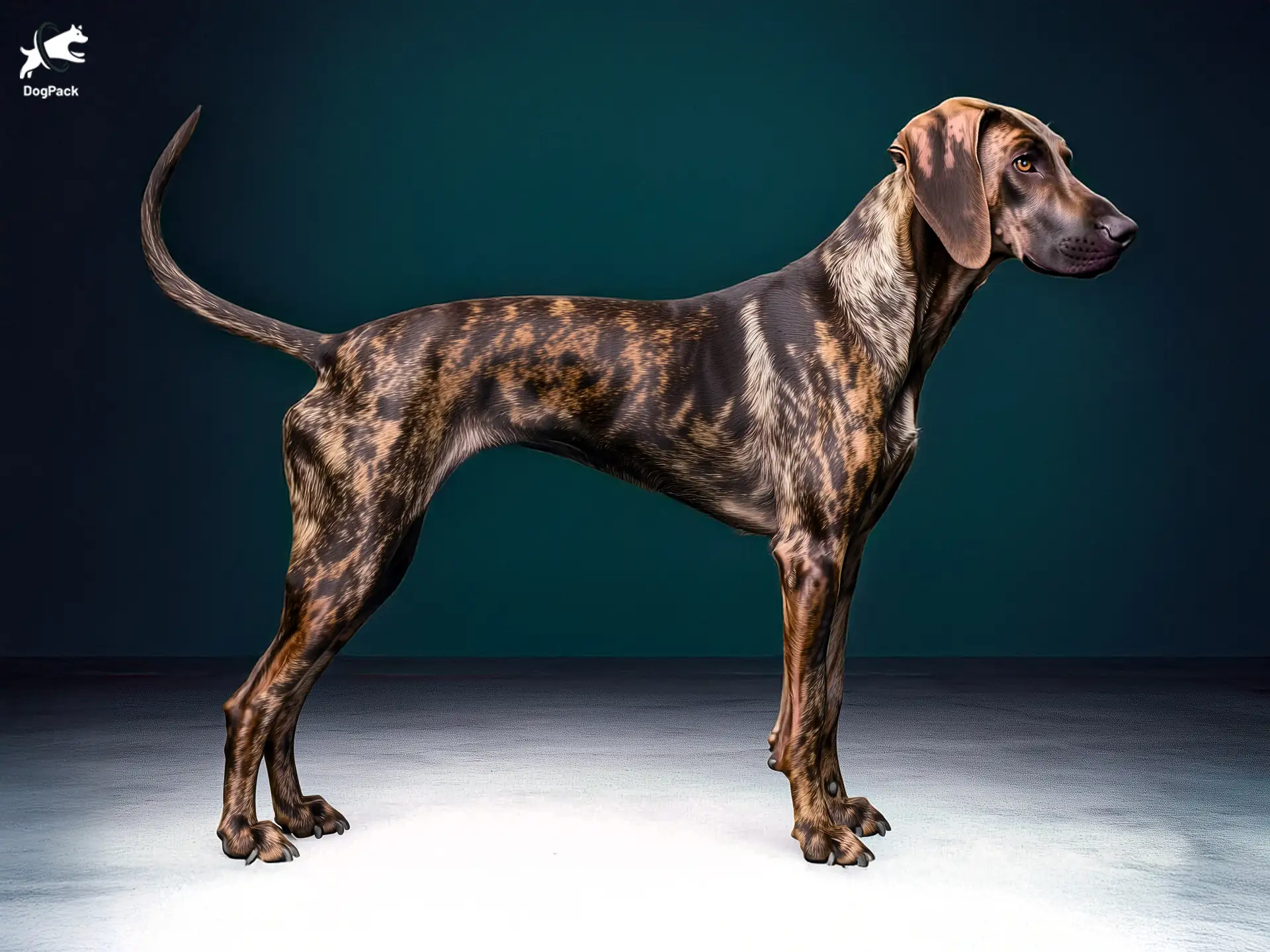Why I’m Obsessed With Treeing Walker Coonhounds (And You Might Be Too)
The first time I encountered a Treeing Walker Coonhound was at a friend’s hunting cabin in rural Georgia. I woke up to the most melodious, haunting bay echoing through the pines, and when I stepped outside, I saw this striking tricolor hound with an athletic build and the most expressive eyes I’d ever seen on a dog. My friend’s Walker, as he affectionately called him, spent that day showing me exactly why these dogs inspire such devotion from their owners – tracking scents I couldn’t detect, moving with incredible grace through difficult terrain, and then curling up by the fire with the sweetest disposition imaginable. I was completely hooked.
If you’ve never heard of Treeing Walker Coonhounds or only vaguely know them as “those hunting dogs with the spots,” you’re missing out on one of America’s most athletic, intelligent, and personable working breeds. With their distinctive tricolor coats, impressive hunting abilities, and hearts that are equal parts determined tracker and loving companion, these dogs deserve way more recognition than they typically receive outside hunting circles.
Whether you’re considering adding one of these energetic hounds to your family, are curious about their legendary scenting abilities, or just love learning about uniquely American dog breeds, I’ve put together the ultimate guide to Treeing Walker Coonhounds. From their fascinating development as specialized raccoon hunters to what they’re actually like as family companions (spoiler alert: they’re amazing but NEED their exercise), we’ll cover everything you need to know about these melodious trackers. So grab your favorite beverage, get comfy, and let’s dive into the wonderful world of Treeing Walker Coonhounds!
American Heritage: The Rich History of Treeing Walker Coonhounds
To truly understand what makes Treeing Walker Coonhounds so special, we need to appreciate their deep roots in American culture and how their development reflects a distinctly American approach to creating purpose-bred working dogs.
From English Foxhounds to Specialized American Hunters
The Treeing Walker Coonhound’s story begins with Thomas Walker of Virginia, who imported English Foxhounds in 1742. These dogs would become one of the foundation breeds for several American hound varieties. Over time, American hunters selectively bred these English imports to create dogs better suited to the different terrain and game found in the New World.
The direct ancestor of today’s Treeing Walker was the Virginia hound, which was developed specifically for hunting raccoons. The breed we now know as the Treeing Walker Coonhound got its significant boost in the late 19th century when two raccoon hunters, George Washington Maupin and John W. Walker, refined the breeding program to create a faster, more agile, and more focused raccoon hunter.
The “treeing” in the breed’s name refers to their specialized hunting technique – they track raccoons until the animal climbs a tree to escape, then bay loudly to alert hunters to the location. The ability to track, tree, and then vocalize effectively was selectively bred into these dogs over generations.
Originally registered simply as English Coonhounds, they were recognized as a separate breed by the United Kennel Club in 1945 as “Treeing Walker Coonhounds” to honor John W. Walker’s contributions to the breed’s development and to highlight their specialized treeing ability.
Modern Recognition and Working Heritage
While Treeing Walkers have been known and respected in hunting communities for well over a century, mainstream recognition came much later. The American Kennel Club only officially recognized the breed in 2012, making them one of the more recent additions to the hound group.
Despite this late formal recognition, Treeing Walkers have long been considered by many to be the ultimate raccoon hunting dogs, prized for their extreme focus, exceptional scenting ability, distinctive voice, and tireless work ethic. Competitive coon hunting remains popular in many parts of rural America, with top hunting Treeing Walkers commanding impressive prices.
Today, while many continue their traditional role as hunting companions, Treeing Walkers are increasingly finding homes as active family pets and competitors in various dog sports that showcase their natural abilities, from tracking and scent work to agility and even dock diving. Their intelligence and athleticism make them versatile partners for active people, even those who never intend to go raccoon hunting.
The Treeing Walker Look: Athletic Elegance with a Purpose
Treeing Walker Coonhounds have a distinctive appearance that combines athletic functionality with a certain elegance. Let’s explore their physical characteristics and what makes them immediately recognizable to those familiar with the breed.
Size, Build, and Overall Appearance
Treeing Walker Coonhounds are medium to large dogs with an athletic, muscular build that reflects their purpose as endurance hunters. Males typically stand 22-27 inches at the shoulder and weigh between 50-70 pounds, while females are slightly smaller at 20-25 inches and 40-65 pounds.
Their overall appearance conveys both speed and stamina. These are working dogs built to cover challenging terrain for hours, often through the night, and their physical structure serves this purpose. Key physical features include:
- A balanced, symmetrical frame with moderately sloping shoulders
- A somewhat domed skull with a square muzzle and strong jawline
- Long, low-set ears that hang gracefully and, when drawn forward, reach nearly to the tip of the nose
- Clear, bright eyes with an intelligent, alert expression, typically dark brown or hazel
- A deep chest providing ample lung capacity for sustained work
- Strong, straight legs with flexible joints built for endurance over rough terrain
- A medium-length tail that’s carried high and slightly curved when the dog is alert
Their movement is perhaps their most distinguishing physical trait beyond coloration – Treeing Walkers move with a ground-covering stride that appears almost effortless. This smooth, efficient gait allows them to maintain a steady pace for hours without tiring.
Coat Colors and Patterns
The classic and most recognizable Treeing Walker coat is tricolor – white with black spots and rich chestnut or reddish-tan markings, particularly on the head and ears. The amount of black can vary significantly, from large saddle patches to smaller ticking (spots) distributed across the coat.
The breed standard allows for considerable variation, from predominantly white dogs with minimal markings to more heavily marked individuals. The key identifying feature is the combination of black and tan markings on a white background, creating a distinctive tricolor pattern.
Their coat is short, dense, and glossy when healthy. This practical coat protects them from briars and underbrush while hunting without collecting burrs or overheating them during intense activity. It requires minimal maintenance – weekly brushing with a soft bristle brush or rubber curry helps remove loose hair and distribute skin oils. They do shed moderately year-round with seasonal increases.
Those expressive ears need regular checking and cleaning to prevent infection, as their length limits airflow. Weekly cleaning with a veterinarian-approved ear cleaner helps prevent problems.
Personality & Temperament: What Makes Treeing Walkers Special
Beyond their striking appearance and hunting prowess, what’s it actually like to live with a Treeing Walker Coonhound? Their personalities combine classic hound traits with some distinctive characteristics that make them both challenging and incredibly rewarding companions.
The Essential Treeing Walker Character
If I had to sum up the Treeing Walker personality in three words, they would be: driven, social, and expressive. These dogs bring together remarkable focus and determination with a genuinely people-oriented nature that makes them excellent companions for active, engaged owners.
Drive is perhaps their most defining trait. Treeing Walkers were bred for singular determination in tracking and treeing raccoons, often working through the night in challenging conditions. This creates a dog with impressive focus and work ethic that translates to everything they do. When a Treeing Walker sets their mind to something, their persistence can be astonishing – whether that’s following a scent trail, learning a new skill, or figuring out how to access something interesting (or edible!) that’s out of reach.
Sociability is another hallmark of the breed. Unlike some working dogs that bond primarily with one person, Treeing Walkers are typically friendly and outgoing with family members, visitors, and other dogs. Their pack hunting heritage has created a dog that generally enjoys company and forms strong bonds with their human family. Most are good with children, showing patience and gentleness when properly socialized, though their exuberance might be overwhelming for very small kids.
Expressiveness completes their character profile. Treeing Walkers are not subtle dogs – they communicate their feelings, desires, and discoveries with enthusiasm, both vocally and through body language. From their melodious bay when excited to their soulful expressions when hoping for a treat, these dogs have a way of making their thoughts and feelings abundantly clear to their humans.
The Voice: Musical and Meaningful
We can’t talk about Treeing Walker personality without highlighting their voice! As hunting hounds, they were specifically bred to be vocal on the trail, allowing hunters to follow their progress by sound when they were out of sight in dense woods or swamps.
Their voice is considered by many to be among the most musical of the hound breeds – a distinctive baying howl that carries over long distances. Most Treeing Walkers have a range of vocalizations, from excited barks to the classic baying “aroooo” when they’re on a scent. Many even have what owners describe as different “words” for different situations – a specific sound for “I’ve treed something!” versus “There’s someone at the door!” versus “I’m bored and want attention!”
This vocal nature can be challenging in suburban environments and is one reason they’re not ideal for apartment living or areas with strict noise ordinances. Training can help manage excessive vocalization, but it’s important to understand that some baying is simply part of who they are – expecting a completely quiet Treeing Walker is unrealistic.
Energy Level and Exercise Needs
Treeing Walker Coonhounds were bred for endurance hunting that might last all night, and this heritage is reflected in their substantial energy level and exercise needs. While not manically hyperactive, they do require significant daily physical and mental stimulation to remain happy and well-behaved.
A bored, under-exercised Treeing Walker can become destructive, excessively vocal, or develop problem behaviors like digging and escape attempts. At minimum, these dogs need 1-2 hours of vigorous exercise daily, ideally including activities that allow them to run and use their nose.
The good news is that with adequate exercise, many Treeing Walkers are surprisingly calm and content inside the home. Once their physical needs are met, they’re often happy to relax with their family, though they’ll always be ready for the next adventure.
The Incredible Nose: Understanding Their Tracking Abilities
The Treeing Walker Coonhound’s most remarkable feature isn’t their striking appearance or melodious voice – it’s their extraordinary sense of smell and tracking ability. Let’s explore what makes their scenting prowess so special and how it impacts life with these dogs.
The Science Behind the Scent
Like all scent hounds, Treeing Walker Coonhounds have a significantly more developed olfactory system than humans. While the human nose contains about 5-6 million scent receptors, a hound’s nose packs an estimated 220 million or more! Their brain’s olfactory bulb (the part that processes scent information) is also proportionally much larger than ours.
This gives them the ability to detect scents at concentrations up to 100 million times lower than what humans can perceive. They can distinguish between incredibly similar scents, follow trails that are days old, and sort through a complex landscape of overlapping odors to focus on their quarry.
Their physical features enhance this natural ability. Those long, droopy ears help stir up scent particles from the ground as the dog moves. The loose skin around their muzzle can trap scent particles, and their moist, spongy noses efficiently capture scent molecules from the air.
The Treeing Walker Style: Hot on the Trail
Treeing Walker Coonhounds are what hunters call “hot-nosed” trackers, meaning they excel at following fresh trails with great enthusiasm and speed (in contrast to some “cold-nosed” breeds like Black and Tan Coonhounds that methodically work older trails). Their trailing style typically involves a lot of energy and excitement, especially when the scent is strong.
What makes Treeing Walkers particularly valuable as hunting dogs is their combination of excellent nose, focus, and distinctive treeing behavior. When they track a raccoon to a tree, they’ll circle the tree, looking up and baying with a special cadence that lets hunters know they’ve “treed” their quarry rather than just spotted an interesting scent.
This remarkable scenting ability makes them excellent working dogs for various scent-based activities beyond traditional raccoon hunting. Today, some Treeing Walker Coonhounds serve in search and rescue, detection work, and competitive tracking events, where their speed and enthusiasm for the work can be valuable assets.
For pet owners, this incredible nose means that walks will frequently turn into sniffing expeditions, and secure fencing is absolutely essential. Once they catch an interesting scent, their recall reliability can drop dramatically as their hunting instincts take over.
Health and Longevity: Caring for Your Treeing Walker
One advantage of purpose-bred working dogs like the Treeing Walker Coonhound is their generally good health. As a breed developed for function rather than appearance, they’ve maintained a practical body structure and avoided many of the health problems that plague some more popular breeds.
Common Health Considerations
While generally robust dogs with fewer health problems than many breeds, Treeing Walker Coonhounds can be prone to certain conditions:
- Hip Dysplasia: This developmental condition affects the hip joint and can lead to arthritis and mobility issues.
- Ear Infections: Those beautiful long ears are prone to infections due to poor air circulation.
- Progressive Retinal Atrophy (PRA): An inherited eye condition that can lead to blindness.
- Bloat (Gastric Dilatation-Volvulus): This life-threatening condition occurs when the stomach fills with gas and twists on itself. Large, deep-chested breeds like Treeing Walkers can be susceptible.
- Polyradiculoneuritis (Coonhound Paralysis): A neurological condition sometimes triggered by raccoon bites, though it can occur without this exposure.
Working with a reputable breeder who conducts health testing on their breeding stock can reduce the risk of inherited conditions. Regular veterinary check-ups are essential for catching and addressing health issues early.
Lifespan and Aging Considerations
The average lifespan of a Treeing Walker Coonhound is about 10-13 years, which is good for a medium to large breed. Many remain active and energetic well into their senior years.
As they age, Treeing Walkers may develop arthritis, particularly if they’ve been very active throughout their lives. Weight management becomes even more critical for older dogs to reduce strain on their joints. Many owners find that joint supplements (given under veterinary guidance) help maintain mobility as their coonhounds age.
Senior Treeing Walkers often maintain their sweet, friendly temperament while becoming somewhat less driven to follow every interesting scent, often making them more manageable as house pets in their golden years.
Training and Exercise: Meeting Their Needs
Training a Treeing Walker Coonhound requires understanding their unique mindset and providing adequate physical and mental stimulation. Let’s explore effective approaches to bringing out the best in these energetic, scent-driven dogs.
Exercise Requirements: The Key to Good Behavior
Perhaps the most important thing to understand about Treeing Walker Coonhounds is their substantial need for exercise. These dogs were bred to hunt all night, often covering many miles of challenging terrain. Without adequate physical outlets, they can become destructive, excessively vocal, and difficult to manage.
A minimum of 1-2 hours of vigorous exercise daily is appropriate for most adult Treeing Walkers. This should include activities that allow them to run and burn energy, not just leash walking. Suitable exercises include:
- Hiking on trails
- Running in a securely fenced area
- Swimming (many Treeing Walkers enjoy water activities)
- Play sessions with other dogs
- Structured activities like tracking, field trials, or lure coursing
In addition to physical exercise, mental stimulation is equally important. Scent work is particularly satisfying for these dogs – activities like tracking, nosework, or even simple “find it” games around the house engage their natural abilities and help tire them mentally.
It’s worth noting that a securely fenced area is essential for Treeing Walker Coonhounds. Once they catch an interesting scent, their hunting instincts take over, and they can run for miles completely focused on the trail. Their recall can be unreliable at best when they’re in “hunting mode,” making off-leash exercise in unfenced areas risky.
Training Approaches: Working With Their Nature
Training a Treeing Walker Coonhound requires patience, consistency, and an understanding of their hound mentality. Here are some strategies that work particularly well:
- Start early: Begin training and socialization when they’re puppies and more receptive to new experiences.
- Use positive reinforcement: Treeing Walkers respond much better to rewards than corrections. Find what motivates your individual dog – food rewards work for many, but some may respond better to play or praise.
- Keep sessions short and engaging: These dogs can become bored with repetitive training. 5-10 minute sessions several times a day are more effective than one long session.
- Be consistent but flexible: Consistency in rules and commands is important, but flexibility in training approaches may be necessary as you discover what works best for your individual dog.
- Exercise before training: A tired Treeing Walker is more likely to focus on training than one with pent-up energy.
- Use their nose: Incorporating scent work into training can increase their engagement and motivation.
It’s important to understand that Treeing Walker Coonhounds were bred to work somewhat independently, making decisions on their own while tracking. This created a dog that can problem-solve independently but doesn’t necessarily look to humans for constant direction. Many new owners mistake their independent decision-making for stubbornness or lack of intelligence, when in fact they’re simply operating according to their breeding.
Special Training Challenges
Two aspects of training deserve special attention with Treeing Walker Coonhounds: recall and their vocal nature.
Reliable recall (coming when called) is perhaps the biggest training challenge with this breed. Once they catch an interesting scent, their hunting instincts can override their response to commands. For safety, most experienced Treeing Walker owners never allow their dogs off-leash in unsecured areas, regardless of how well-trained they seem. For those determined to improve recall, long-line training and high-value rewards can help, but expectations should remain realistic.
Managing their vocal tendencies requires consistent training from an early age. While some baying is an inherent trait that shouldn’t be completely suppressed, most Treeing Walkers can learn appropriate times and places for vocalization. Teaching a reliable “quiet” command and rewarding calm behavior can help manage excessive baying, though they’ll likely never be silent dogs.
Is a Treeing Walker Coonhound Right for You? Honest Assessment
After learning all about these energetic, vocal hunters, you might be wondering if a Treeing Walker Coonhound would fit well in your lifestyle. Let’s take an honest look at who should (and perhaps shouldn’t) consider this breed.
You Might Be a Great Treeing Walker Owner If…
A Treeing Walker Coonhound might be right for you if:
- You lead an active, outdoor lifestyle and enjoy activities like hiking, running, or cycling
- You have a securely fenced yard or reliable access to safe exercise areas
- You appreciate their vocalization or live in an area where it won’t disturb neighbors
- You have patience for training a dog with an independent streak
- You’re looking for a friendly, social dog that generally gets along well with people and other dogs
- You understand and can commit to their substantial daily exercise needs
- You appreciate their hunting heritage and natural instincts
- You’re interested in activities that utilize their amazing nose, like tracking or nosework
Treeing Walker Coonhounds can adapt well to family life and generally do well with children, especially if raised with them. They often thrive in households with multiple dogs, benefiting from canine companionship.
A Different Breed Might Be Better If…
A Treeing Walker Coonhound might not be the best choice if:
- You have a sedentary lifestyle or limited time for exercise
- You live in an apartment or area with strict noise ordinances
- You want a dog that’s easy to train with high reliability off-leash
- You’re looking for a guard dog (while they’ll alert with their bay, they’re typically friendly to everyone)
- You have small pets like rabbits or guinea pigs (strong prey drive)
- You’re away from home for long periods regularly
- You want a dog that focuses primarily on you rather than environmental stimuli
- You prefer a dog that’s content with moderate exercise like daily walks
Finding Your Treeing Walker
If you decide a Treeing Walker Coonhound is right for you, consider both rescue and reputable breeders:
Coonhound-specific rescues exist throughout the country and often have wonderful dogs needing homes. Many coonhounds end up in shelters because owners underestimated their exercise needs or couldn’t accommodate their vocalization. Adoption typically costs $100-$300 and often includes initial veterinary care.
If purchasing from a breeder, research extensively to find one who prioritizes health and temperament. Reputable breeders conduct health testing on breeding stock, provide proper socialization for puppies, and offer lifetime support to puppy buyers. Expect to pay $400-$800 for a well-bred Treeing Walker Coonhound puppy.
The American Treeing Walker Coonhound Association or the United Kennel Club can be good resources for finding reputable breeders or rescue organizations.
Conclusion: America’s Vocal, Energetic Hunting Partners
There’s something special about Treeing Walker Coonhounds. From their rich hunting heritage to their athletic build and friendly temperament, these dogs represent an important piece of American rural tradition while offering dedicated companionship to active families.
Living with a Treeing Walker certainly comes with unique challenges – their substantial exercise requirements, vocal nature, and that independent streak that can make training interesting. But for active people who appreciate them for exactly who they are, these challenges are far outweighed by the joy of sharing life with such an honest, capable, and good-natured companion.
Whether they’re bounding tirelessly alongside you on a trail run or singing their melodious bay when they’ve discovered something exciting, Treeing Walker Coonhounds bring a special energy to the lives of those lucky enough to know them. They connect us to America’s rural traditions while forming deep bonds with their modern families.
If you decide to welcome one of these energetic hunters into your home, prepare for an adventure filled with melodious howls, impressive tracking demonstrations, and more loyalty and affection than you might have expected from such an independent-minded dog. It’s a unique journey – and for the right person, an incredibly rewarding one.




